Research and Current Profile of Iranian Production of Damask Rose
Tessiess, SoCal Inland, 9b, 1272' elev
11 years ago
Featured Answer
Sort by:Oldest
Comments (40)
jerijen
11 years agoTessiess, SoCal Inland, 9b, 1272' elev
11 years agoRelated Discussions
Is What Pickering Selling as Autumn Damask not the Real Thing?
Comments (21)Jeri and Kim: Thank you for explanation. I guess there is more to classification than flower form and smell. Melissa: I just bought Rose de Rasht this year. Rasht is birthplace of my mother in law and I thought she would get a kick out of it. Her reaction was "Good roses dont grow in Rasht, it is too rainy and humid." I know Rose de Rascht may not be from Rascht but her comment was so mother-in-lawy. My lot is very small and do not have too much space for big Damasks. Although a couple of years ago, a friend gave me a sucker from her own Damask plant. What I could not get out of her was that if she actually brought it from Iran or she bought a named Damask from a nursery, assuming it was the same. I will post pic for ID in spring. Growing up in a city, I had never seen any rose growing wild in Iran. Then again I was a teenager when we left and never an outdoorsy person. If I come across any seed, I will try to bring it back. BTW for anyone interested, Regan still has few more PFSR in hand. You have to call, it is not listed on the online catalog. FJ...See MoreFavorite old roses for cooler climates?
Comments (18)Generally the repeat blooming northern OGR are not spot resistant like the teas and chinas you are used to. But the once-blooming albas and gallicas are iron hardy (meaning cold-resistant), and most of them are spot-resistant. Generally they will not need much irrigation or fertilizer once they are established. The once-blooming, early Asian yellows and once-blooming ramblers are also easy to grow and will extend the season of bloom. If you have mostly once-bloomers, you mostly bypass the Japanese beetles that ravage roses in July and August. Among repeat-bloomers, 'Souvenir de la Malmaison' and its several sports stand out in my eastern 7a garden. If grown without fungicide, they get blackspot, but not as badly as most roses. Then some modern roses to try include 'Earth Song', 'Bolero', 'The Generous Gardener', 'Munstead Wood', 'Laguna', 'Quadra', 'Carefree Sunshine', and 'Caramela'. These are spot-resistant in many gardens. If you haven't had much blackspot this year, it will probably get worse, and most roses will defoliate repeatedly. Micronized sulfur and copper soap are two products that are considered organic and that will help a lot with blackspot if sprayed every week...See MoreHigh Country Roses has moved. Roses love the new location!
Comments (57)Vaporvac, I would love it if you could come. But there aren't any other rose aficionados there. I brought Oranges N Lemons and Sally Holmes last year and there weren't really any takers. The Oranges N Lemons went in the free for all at the end where you just grab whats left but I brought the Sally Holmes home. This year I didn't bring the Gourmet Popcorn I gave away because we hadn't dug it up yet. Instead I advertised it on Nextdoor so someone could research it and really want it. If I thought there would be any interest we would have made more of an effort to get it dug up. In terms of timing they are decided upon a few weeks in advance based on the schedule of the person volunteering to host. BTW, my other Oranges N Lemons I tried to propagate died over the winter in our basement but the Sally Holmes appears to have hung on. It showed a small amount of new growth this spring but is back in the basement due to bad weather. I don't yet know where I will put it if I keep it. The Oranges N Lemons in the yard showed great new growth a month ago but then got badly shredded by the hail. Right now it is looking iffy if it makes it with barely any green on it's little stub of a self. I think if it doesn't I won't replace it with another. We just have bad juju with that rose. First it gets run over with a garden cart the same day it goes in the ground, then the rooting portion dies due to neglect when my mom forgot to water the basement plants while we were on vacation. And now it gets hammered by hail....See MoreDo You Grow Damask Perpetuals?
Comments (23)Belle Gallica, how do Austins do for you? Paul's 'Marianne' and 'Allegra' are listed as zones 6b-9b and 4b-10b...probably due to Austin parents? 'Marianne' is from 'Abe Darby' and 'Allegra' is from 'St.Swithin'. Also, 'Etienne' (4a and warmer) is from 'Chianti'. I know from experience that they rival the old classics and look every bit OGR/Gallica, although I'd say 'Marianne" looks like 'Gloire de Dijon' and 'Charles de Mills' had productive sex. I grew 'Etienne' but gave it away to dear friends who had never seen such decadent, beetroot blooms. The 'Allegra' growing in Paul's garden is speech-defyingly exquisite and my current obsession. I grow a young 'Marianne' since I kept purchasing her, growing her, digging her up and passing her along to people who fell in love. I'm RVR waitlisted again for the other two and WILL NOT dig up and gift my current 'Marianne.' I hope you have wonderful luck with 'Rosa Mundi'. She's lovely! Lindsey, maybe there should be a thread asking everyone to guesstimate the bloom period of their Gallicas, including Paul Barden's? I know, in general, his do bloom for quite a stretch in my garden, but I've never calculated how long, and mine are all rather young because I keep giving them away to friends or acquaintances that are both unfamiliar with them and bewitched by their old rose beauty. Since they are easy keepers here in Portland, I know they will flourish in their new homes unlike blackspot-on-a-stick HTs. I tell everyone that they are like camellias and rhododendrons. Who wouldn't grow a camellia just because it only blooms once a year? Sheila, love the Duchesse! Chris and Lindsey, I'll try to find a shot of my Indigo, too. I have one somewhere. To me, 'Indigo' looks and acts like a (moderately spreading) Gallica, smells like a Damask and repeats like a HP/Portland. It's very healthy here. No "damask crud" noted. How's its health for you, Chris? Carol...See Morecatspa_NoCA_Z9_Sunset14
11 years agoroseseek
11 years agoTessiess, SoCal Inland, 9b, 1272' elev
11 years agocatspa_NoCA_Z9_Sunset14
11 years agojerijen
11 years agocatspa_NoCA_Z9_Sunset14
11 years agonadia214
11 years agoroseseek
11 years agojerijen
11 years agoharborrose_pnw
11 years agojerijen
11 years agocatspa_NoCA_Z9_Sunset14
11 years agocatspa_NoCA_Z9_Sunset14
11 years agojerijen
11 years agoharborrose_pnw
11 years agocatspa_NoCA_Z9_Sunset14
11 years agokittymoonbeam
11 years agonadia214
11 years agoroseseek
11 years agonadia214
11 years agocatspa_NoCA_Z9_Sunset14
11 years agoroseseek
11 years agoTessiess, SoCal Inland, 9b, 1272' elev
11 years agokittymoonbeam
11 years agokittymoonbeam
11 years agokittymoonbeam
11 years agokittymoonbeam
11 years agoannesfbay
11 years agojerijen
11 years agoKippy
11 years agoUser
11 years agonadia214
11 years agoroseseek
11 years agonadia214
11 years agomonarda_gw
11 years agojerijen
11 years agoUser
11 years ago
Related Stories

GARDENING GUIDESWhat Kind of Roses Should You Grow?
Want to add the beauty of roses to your garden? Find out which ones, from old-fashioned to modern, are right for you
Full Story
WINTER GARDENINGPruning Secrets for Exquisite Roses
Encourage gorgeous blooms year after year with this time-tested advice on how to prune your rosebush in winter for health and shape
Full Story
WINDOWSSteel-Framed Windows Leap Forward Into Modern Designs
With a mild-mannered profile but super strength, steel-framed windows are champions of design freedom
Full Story
MATERIALSAn Architect Shares His Go-To Materials
Aluminum doors, porcelain tiles, polished concrete. Here are the features and finishes this professional returns to time and again
Full Story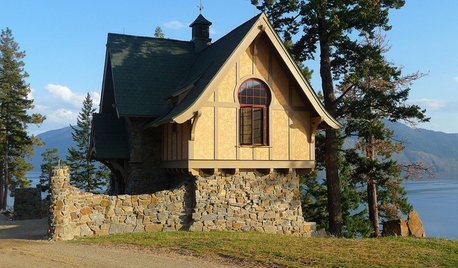
ARCHITECTUREHow to Design a Storybook Cottage
A client’s request: “Build me a house where Disney meets Tudor.” The architect explores the details that make the style
Full Story
REMODELING GUIDESSo You Want to Build: 7 Steps to Creating a New Home
Get the house you envision — and even enjoy the process — by following this architect's guide to building a new home
Full Story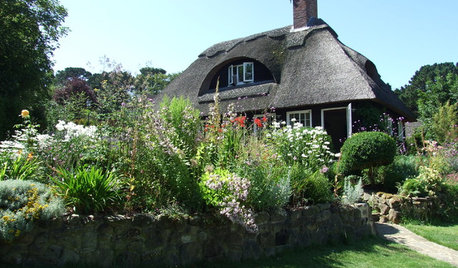
LANDSCAPE DESIGNHow to Create a Cottage-Style Garden
If you like an abundance of plants — and visits from birds, bees and butterflies — this may be the style of yard for you
Full Story
REMODELING GUIDESLinoleum, the All-Purpose Flooring Wonder
Dashing in a rainbow of colors, able to be cleaned with ease and courteous to budgets everywhere, linoleum is a super choice for floors
Full Story
BATHROOM DESIGN10 Top Tips for Getting Bathroom Tile Right
Good planning is essential for bathroom tile that's set properly and works with the rest of your renovation. These tips help you do it right
Full Story
MOST POPULARYour Guide to 15 Popular Kitchen Countertop Materials
Get details and costs on top counter materials to help you narrow down the choices for your kitchen
Full StorySponsored
Industry Leading Interior Designers & Decorators in Franklin County



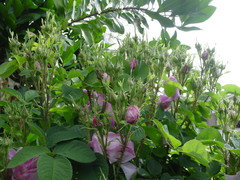
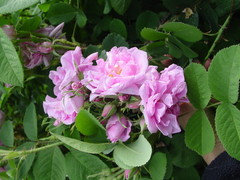
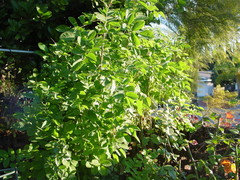
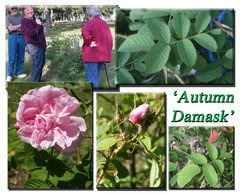





jerijen